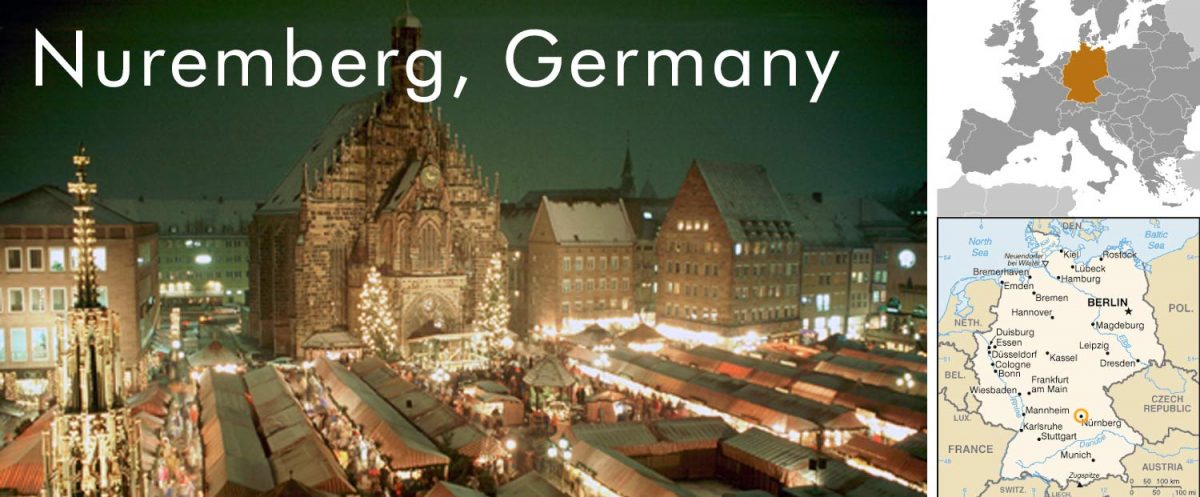
Overview: Nuremberg, Germany, in a nutshell
Nuremberg, the second-largest city in Bavaria and the fourteenth-largest local authority in Germany, has profited from its central European economic location, especially since the eastern expansion of the European Union. Nuremberg with its 500,000 inhabitants is the Northern Bavarian centre of economy, service industry and culture, as well as the centre of a conurbation of about two million people.
What else do we associate with the city of Nuremberg?
Some people might think of Bratwurst (fried sausage), Lebkuchen (spicy gingerbread) or the Christkindlesmarkt, Nuremberg’s world-famous Christmas market. Others may remember the Nuremberg Trials and the city abused by the Nazis as the City of the Nazi Party Rallies. Others again may think of Nuremberg as a Renaissance city of European standing where artists and men of learning such as Albrecht Dürer and Willibald Pirckheimer worked, where Martin Behaim devised the first world globe, and where Peter Henlein made a fob watch tick for the first time.
All those images make up the many-faceted mosaic of Nuremberg. In today’s reality there is the aspect of the outward-looking economic location with its excellent infra-structure, with future-oriented industries, and with its permanent innovative drive.
There is the seat of learning and research with renowned universities and research institutes. There is the culture city with its varied museum scene and its wide range of attractive events. There is the social aspect of the city with many exemplary projects and institutions.
And there is Nuremberg’s high quality of life, underlined by the findings of numerous international surveys – and enjoyed on a daily basis by its 500,000 inhabitants. And there are many vibrant cultures living together in Nuremberg, just as much part of the fabric of Nuremberg as the lively mix of history and modern times making up this city.
Sightseeing Highlights of Nuremberg
Things to do and not to miss: Nuremberg Sightseeing
Find all our Nuremberg articles by using the TAG Nuremberg or type into the search field: Nuremberg
Climate, Weather & Temperatures in Nuremberg, Germany
Best time to travel / Season
Spring/Summer
Most people choose to visit Nuremberg during summer between May and September when the climate is at its most favorable.
Winter
December is the month of the Christkindlmarket in Nuremberg and many other German cities.
Read also: Christmas Markets in Germany
Map
History of Nuremberg
Nuremberg’s Origins
Nuremberg entered recorded history with a happy event: on July 16, 1050, Emperor Heinrich III freed his serf Sigena. The relevant document includes the first mention of the word “Norenberc”, which means rocky mountain. On this hill of sandstone towering above the wooded countryside near the River Pegnitz, the Imperial Castle, Nuremberg’s famous landmark, was built. At that time, the city was growing rapidly. Soon, the city district named after St. Sebaldus Church was too small. On the south bank of the River Pegnitz, a second wonderful Gothic church, named after St. Lawrence, gave a new city district its name: St. Lorenz. The city was surrounded by a city wall, most of which remains intact until today.
Thanks to the many privileges granted to the city by German Emperors in the 13th and 14th century, Nuremberg gained the status of a Free City of the Holy Roman Empire. Here, Emperor Karl IV issued the Golden Bull in 1356, a constitution for the empire, and decreed that any future King had to hold his first imperial diet in the Free Imperial City of Nuremberg.

